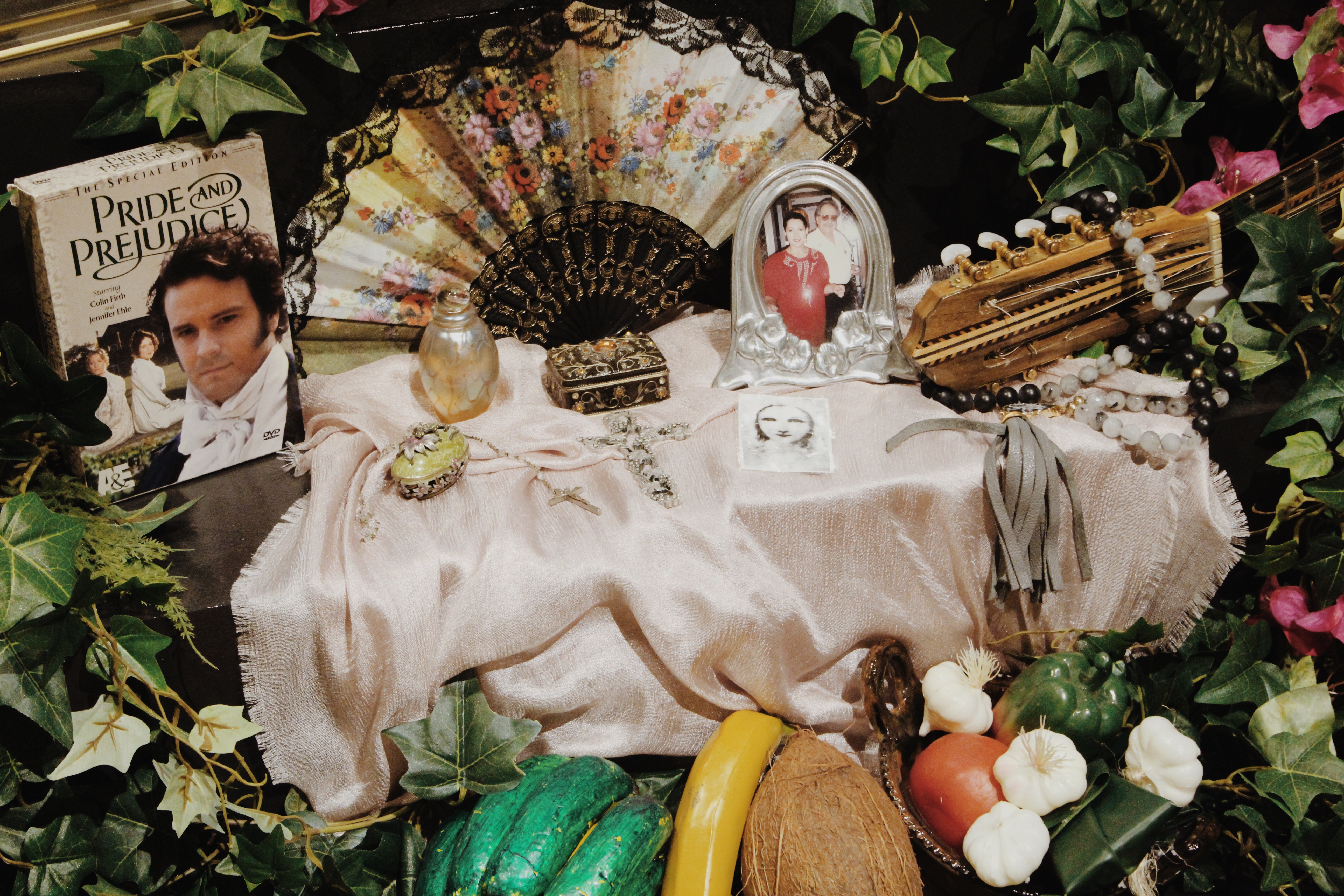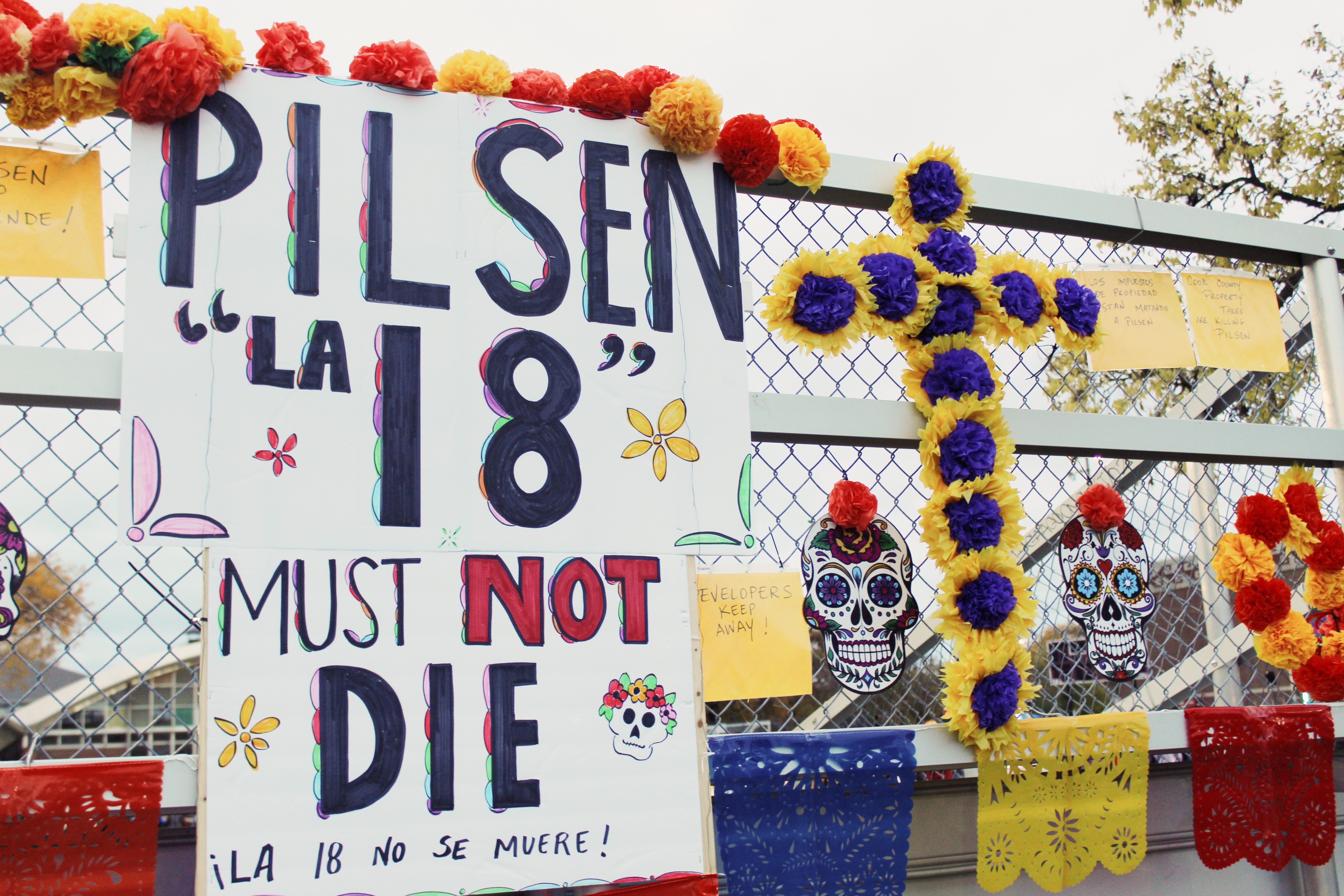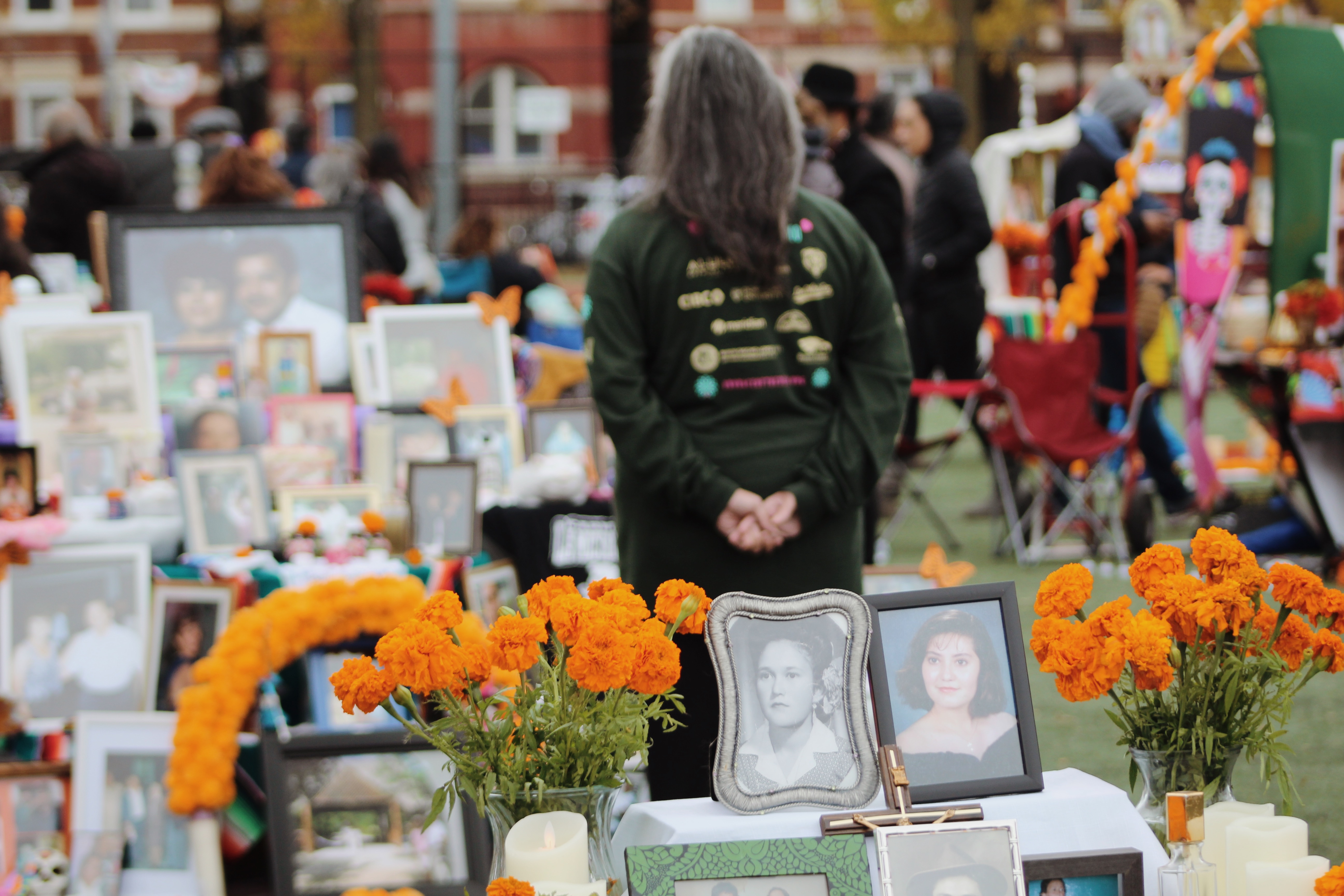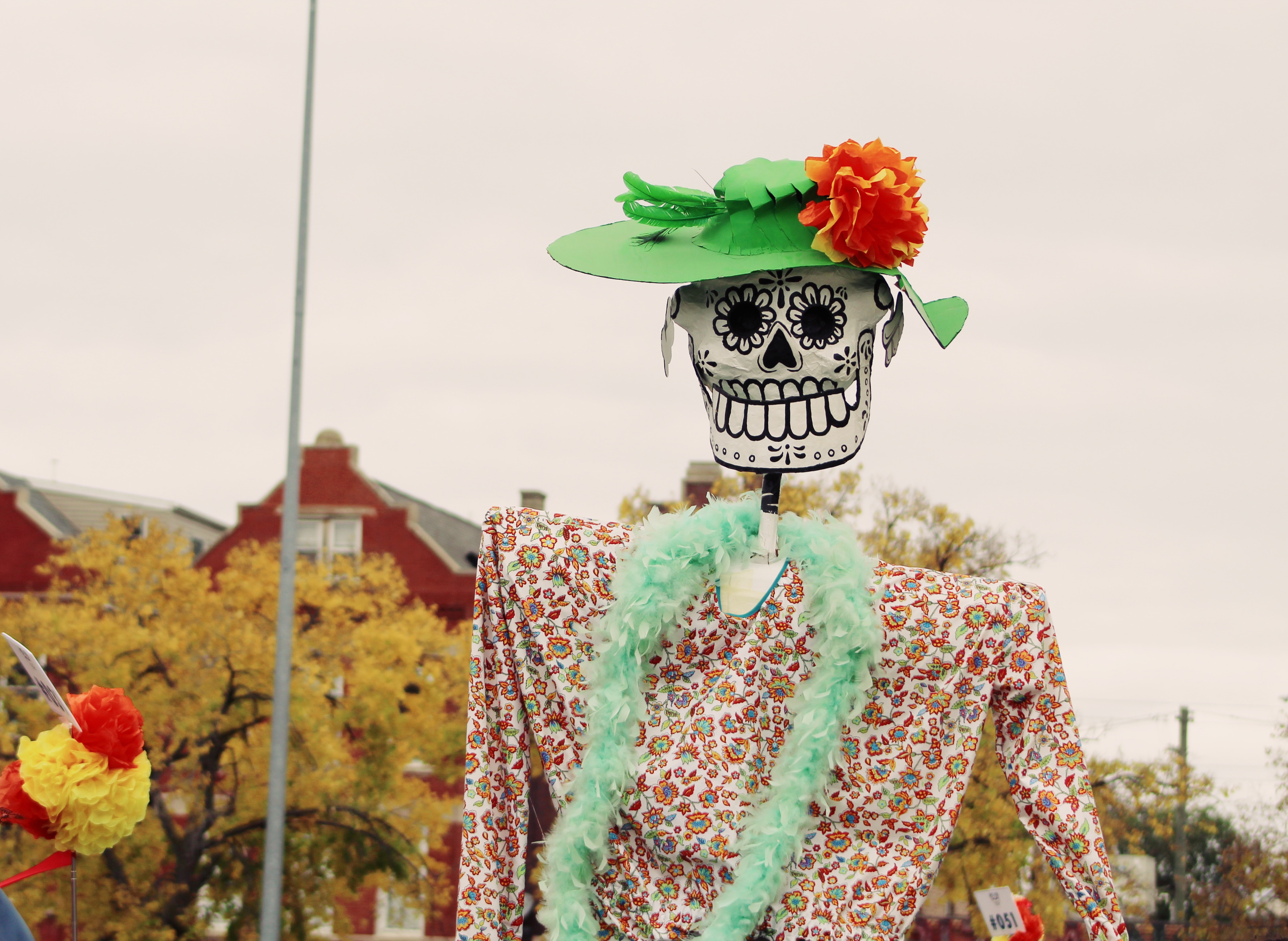The unique ways in which Día De Los Muertos is celebrated
On October 28, the National Museum of Mexican Art (NMMA) hosted the “Día de los Muertos Xicágo” event. It continued their Día de Muertos: Living Presence exhibition, which remembered the thousands of lives lost in February from earthquakes in Turkey and Syria.
“Día de los Muertos Xicágo” celebrated community members that have passed on. The museum transformed Harrison Park for guests to enjoy ofrendas, or offerings, created by community members, live musical performances, and public art.
Día De Los Muertos, or the Day of the Dead, is a holiday to remember past loved ones by creating ofrendas to honor their legacy and memories. The offerings encourage the souls from the land of the dead to celebrate by decorating the altars with their departed’s favorite foods and drinks, heirlooms, marigold flowers and photos.
This theme was displayed throughout the museum through artwork with motifs of the calavera and living spirits.

A mural of a loved one. Food, gifts, and decorations are spread out to show appreciation for a life lost. Photo by Rebeca Acosta.
“Presencia” by José Dominguez is part of the museum’s permanent collection. “Presencia” is a multimedia display of a man lying in a casket with a skeleton on each side of the figure.
The NMMA also has a community altar that invites visitors to write to their loved ones. The small notes of remembrance are displayed on the wall as a new form of an altar. The presence of those who have passed continues to live on throughout this unconventional practice, compared to the traditional altar within a home or graveyard.
The NMMA’s “Día de los Muertos Xicágo” had lines of altars that took form as a graveyard as families celebrated the lives of their loved ones. Xóchitl Guerrero, a faculty member at the University of Illinois Chicago and scholar with the Prison + Neighborhood Arts Project (PNAP), honored the loved ones of PNAP students and their incarcerated peers who have passed. PNAP is a visual arts and education project with incarcerated students at Stateville Maximum Security Prison.

Mural on a fence promoting the strength of the Pilsen neighborhood. Photo by Rebeca Acosta.
In the state of Illinois, incarcerated individuals are legally granted release to attend a funeral, at the discretion of the institution, which is heavily dependent on the conviction. Many PNAP students have never attended the funeral of their loved ones despite having multiple losses. Honoring their family and friends by participating in the altar with contributing poems and essays has allowed incarcerated students to grief.
“It can really negatively impact you when you are not able to participate in saying goodbye to your loved ones. It’s something referred to as disenfranchised grief,” Guerrero said.
“You are disconnected from your typical grieving process because you are not able to participate as a community with your loved ones in the same way you would [on the outside].”
While many PNAP students were not familiar with Día De Los Muertos, the belief that those living can honor the dead inspired PNAP students to participate in the holiday.
“I think that belief that there is something beyond after death, it particularly is relevant for folks incarcerated because oftentimes when they are incarcerated their freedom is only going to come through death,” Guerrero said.
“So the belief that there is something better waiting for them, including perhaps being reunited with their loved one, you have a lot more faith in that. By inviting individuals who would not otherwise celebrate Día De Los Muertos, the NMMA is fostering a space for the community to share the universal experience of death through each altar that honors the spirit of something that has passed, even the non-human.

Guests appreciate the murals that lie on the Pilsen streets, celebrating their passed loved ones for the Day of the Dead celebrations. Photo by Rebeca Acosta.
Cesar Luna, a Mexican-American street artist based in Chicago, created an untraditional altar that honored murals completed by artists who have passed away. The mural, Project Logan graffiti wall, was then demolished to build condominiums in Logan Square.
“This wall was not just a wall, it was a place where artists from the Southside, Northside, and Westside to all come and congregate, and make art,” Luna said. “Because of gentrification…we lost this spot.”
Luna’s altar is a wooden wheelbarrow that holds flowers made of papel picado, other flowers made from ribbons, hand painted skulls, and two framed pieces of the mural itself. Luna’s altar gives him a sense of family with the other street artists. “It’s not just people that need to be honored, it’s also the places where we grow that are being taken from us, especially since we’ve been here a long period of time,” Luna said.
Objects that represent those who have passed are often placed on the altar as offerings. For Luna, honoring the object itself was his untraditional practice to ensure the presence of community the mural fostered would live on.
“So a lot of this graffiti art is done in the moment and you’re not really thinking of longevity because we’re so rooted in this place, we always felt like we were always going to have this place,” Luna said.

A skeleton displayed in fashionable clothing for the Day of the Dead celebrations. Photo by Rebeca Acosta.
Helen De La Cruz and Laura Paz of El Pueblo Manda – an activist group fighting to keep local ownership of homes in Pilsen – honored a community displaced by gentrification. Rather than photos of their loved ones, the altar contained photos of homes that have been demolished for redevelopment. Altars are an honorarium, but for the altar of El Pueblo Manda, it was a political statement.
“We’re not dead. But we want to say that they’re trying to kill us. And we are trying to stop it,” Paz said.
The presence of the houses in Pilsen may be lost but the spirit of home continues to live on. “I want to stay here. A lot of us, our home is here, our heart is here. We don’t want to go anywhere,” said De La Cruz.
As the papel picado blows with the whispers of those honored in traditional and nontraditional ways, the spirit of Día De Los Muertos lives on in the city of Chicago.
—————————————————
The National Museum of Mexican Art is presenting their Día de Muertos: Living Presence exhibition until December 10, 2023.
Header by Samarah Nasir



















